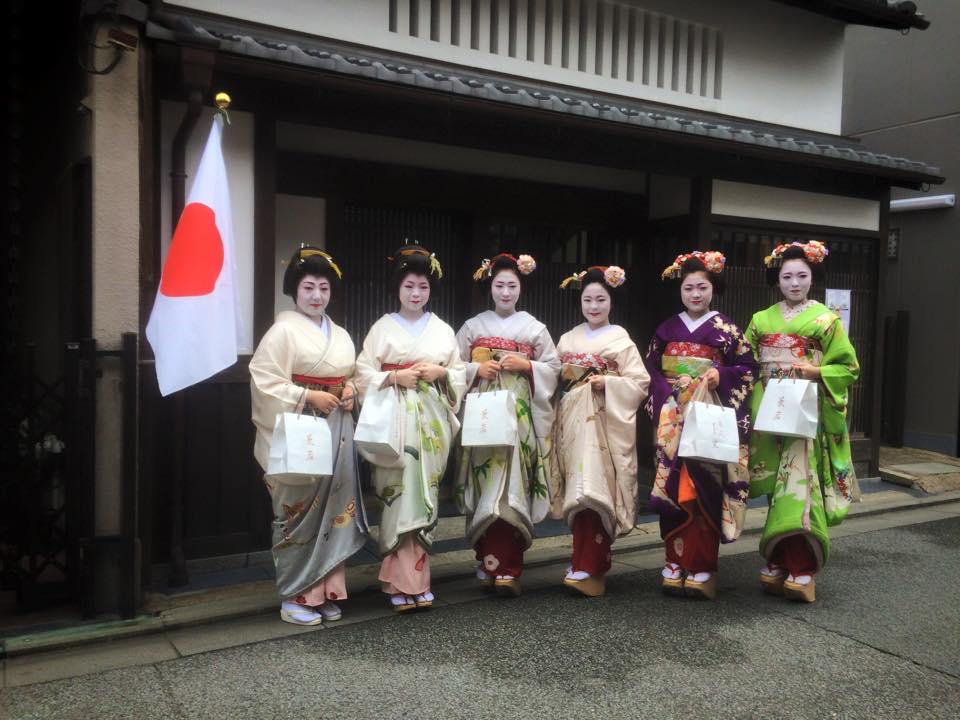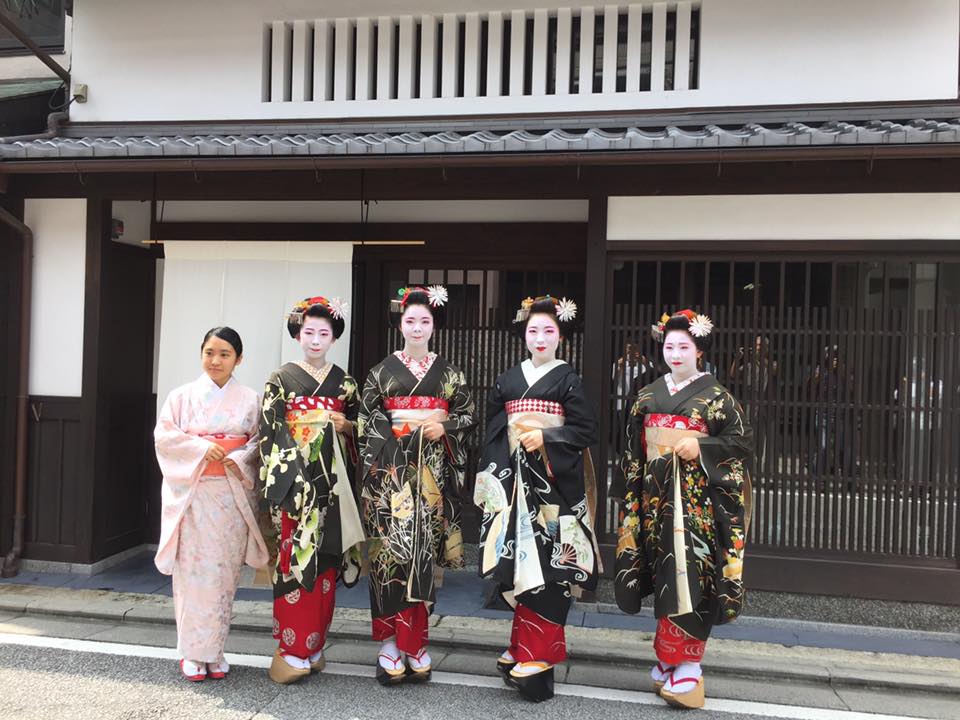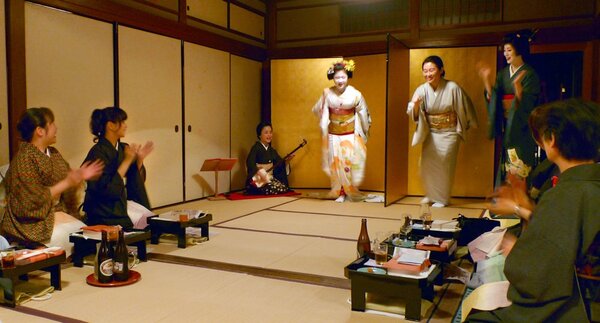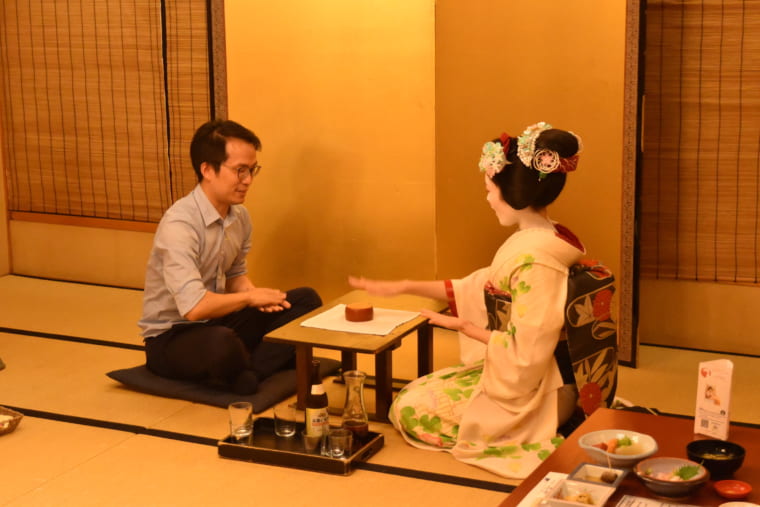
京都の夜の至高のおもてなし
京都の花街(かがい)は、伝統文化が色濃く残る場所として、450年前から国内外の人々に深い感動を与えてきました。
貴族や大名等が要人を接待する場であり、会員制の場の様なもので、誰しも行けるところではありませんでした。
花街の文化は、ただの「観光名所」ではなく、何百年も続く京都の誇りある伝統です。
最初は貴族や大名が自分の応接間の代わりに利用され、要人の接待などに使われておられました。江戸時代に入っては武家や、商人も利用できるようになってまいりました。
京都には五花街があり、各地域数十軒あり、常に発展継続する為の努力をされています。
お茶屋の女将は、賓客をおもてなしするのに、一流の料理、伝統芸能、しつらい、芸舞妓、衣裳等厳選して場を用意されます。その為には、お客様はどんな方か、お好み等は前もって常連客に聞いておかねばなりません。
芸舞妓さんは見た目の華やかさの裏には、芸事に打ち込む厳しい修行や、しきたりを守る真剣な姿勢があります。
舞妓さん・芸妓さんと一緒に、料理をいただいたり、お酒を酌み交わしたり舞や三味線、京言葉のおもてなしを受けたりする、花街ならではの文化的なお遊びもあります。
Kyoto’s Kagai (traditional geisha districts) have deeply impressed both Japanese and international visitors
for over 450 years as places where traditional culture remains vibrant. Originally,
they served as exclusive venues where nobles and feudal lords entertained important guests.
These were private, members-only spaces that not just anyone could enter.
The culture of the Kagai is not merely a “tourist attraction” but a proud tradition of Kyoto
that has continued for centuries.
At first, nobles and lords used these places as an extension of their reception rooms for entertaining celebrities.
During the Edo period, the Kagai also became accessible to Samurai families and Wealthy merchants.
Kyoto is home to five Kagai districts, each with dozens of establishments,
all continuously striving to preserve and evolve this culture.
The proprietress of an ochaya (teahouse) prepares for honored guests with top-tier cuisine,
traditional performing arts, elegant decor, and carefully selected geiko and maiko
in exquisite attire. To create the ideal experience,
she first learns about the guests’ preferences through regular clients.
Behind the maiko’s graceful appearance lies rigorous training in the arts and a deep respect for tradition.
Unique to the Kagai culture, guests enjoy meals, sake, and experience dances, shamisen performances,
and the warm hospitality of Kyoto dialect alongside the maiko and geiko.


お茶屋遊びの基本マナー
Basic Manners for playing in the Ochaya
御茶屋さんが信頼できる人(常連さんなど)が予約して、同伴するのがルールです、支払いもその方がお支払いになります。信用の世界です。
The rule is that a person the teahouse can trust (such as a regular customer) makes the reservation, accompanies the customer, and pays the bill. It’s a world of trust.
京都では第一印象がとても大事。
お茶屋遊びに伺うときは、きちんとした服装(スーツや和装が理想)で、言葉遣いも丁寧にしましょう。
In Kyoto, first impressions matter deeply.
When visiting an Ochaya, dress appropriately — suits. Jacket or kimono is ideal
— and use polite language.
お茶屋遊びでは、料金のことをその場で聞いたり交渉したりできません。
同伴者が責任をもってしはらいます。信用が大事なのです。
When visiting a teahouse, you cannot ask about or negotiate the price on the spot. The person accompanying you is responsible for paying. Trust is important.
舞妓さんや芸妓さんは「おもてなしのプロ」であり「芸の道を極める方々」です。
無理なスキンシップや、ふざけた要求、失礼な質問は絶対にNGです。舞妓さんは未成年者なので、お酒は飲めません。
Maiko and geiko are “professionals in hospitality” and “people who have mastered the arts.”
Unnecessary physical contact, silly requests, and rude questions are absolutely not allowed. Maiko are minors, so they cannot drink alcohol.
芸妓さんや舞妓さんは、お話上手な方ばかり。
京言葉の優しい響きと、お座敷ならではの遊び(「金比羅船々」や「とらとら」など)も一緒に楽しめます。
All of the Geiko and Maiko are excellent talkers.
You can enjoy the gentle sounds of the Kyoto dialect and the games that are unique to ozashiki (such as “Konpira Fune Fune” and “Tora Tora”).


お茶屋遊びは、「京都の美」と「人の心」がぎゅっと詰まった文化体験です。
ルールやマナーを守ることで、花街の人たちとの信頼関係が築け、また次のご縁にもつながります。
Visiting Ochaya is a cultural experience packed with the beauty of Kyoto and the heart of the people. By following the rules and manners, you can build trusting relationships with the people of the entertainment district, which can also lead to new connections.



